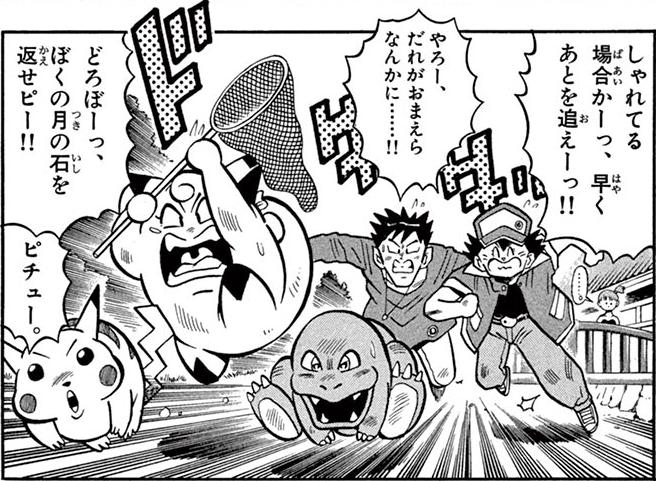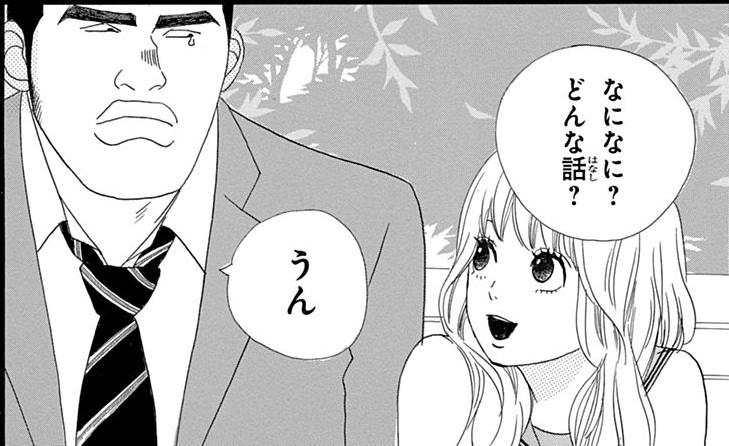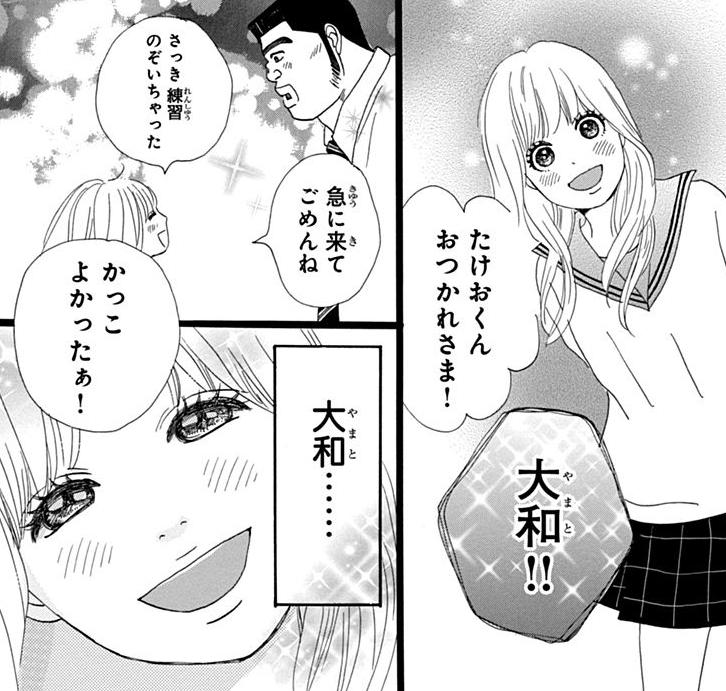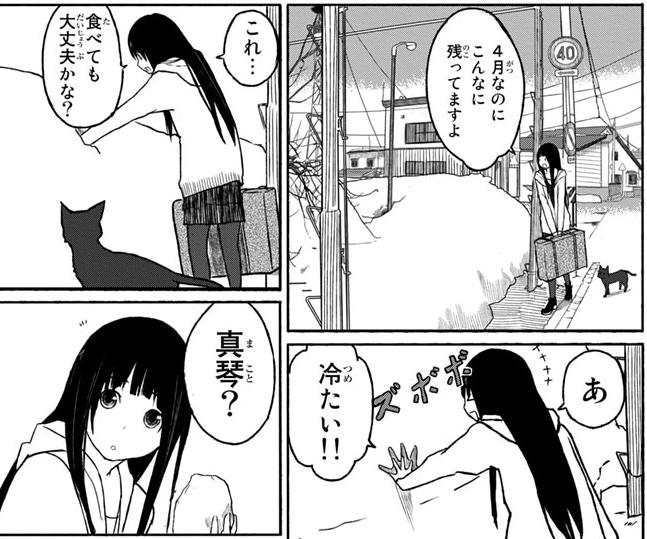Reading Methods
A lot of time is going into manga reading right now. Each item I read falls into one of three categories:
1. The "Understand Everything" Method
The goal of this method is to understand everything. I look up every word and every grammar I don’t know. There is a focus on understanding of material, quality over quantity.

Pros:
- Learn a lot of grammar.
- Encounter a lot of vocabulary.
Cons:
- Time-consuming.
- Have to love the material very much to keep going.
- Potential risk of burning out on the material.
My experience:
- I did this with volume 1 of Is the order a rabbit? and learned a lot from it.
- I probably learned 500 new words in the process.
- Since I had the electronic book release, I used KanjiTomo to OCR the kanji (no furigana).
- Being a 4koma helped with the pacing. I was able to go through one four-panel strip per day, regardless of how much text was in it.
- I chose this manga because I really liked the anime (after watching season one). I love the material, and thankfully did not burn out on it.
☙❦❧
2. The "Keep Reading" Method
The goal of this method is to keep reading. I don’t look up anything, except the occasional word, especially if it’s appeared three times in a chapter. There is a focus on quick consumption of a lot of material, quantity over quality.

Pros:
- Increased reading speed.
- Increase comprehension speed.
Cons:
- Don’t learn new material.
- Can be difficult to follow story.
My experience:
- I started with with Mitsuboshi Colors. I have not watched the anime, so I went in completely blind. I found I had just the right amount of vocabulary and grammar learned to read without feeling I was missing anything with words I didn’t know. I’d look up any word that came up three times, and sometimes I’d note down something to check online when I got home.
- I started reading Yotsuba& using this method as well. I’ve read the whole series in English, but it was long enough ago that I’d forgotten many chapters. The easy chapters I follow effortlessly, and the hard chapters I just force myself through.
- I’m also reading Saint Tail, which I’ve read in English and seen the subtitles anime all the way through. Even though that was a long time ago, I had read/watched each probably both at least two or three times, so I remember the material very well.
☙❦❧
3. The "Compare with English Translation" Method
This goal of this method is to use an existing English translation to help with understanding. I read through a page in Japanese without stopping to look anything up. Then afterwards, I read the page in English. I’ll look up anything I have questions on.
Pros:
- Increased reading speed.
- Increased comprehension speed.
- Learn new material.
Cons:
- May avoid trying to comprehend material knowing the English translation will be read next.
- Disappointment with the English translation. (“Wait, what? No, that’s not what he said.”)
- Disappointment with the loss of nuance in the English translation (such as use of first name vs last name).
- Disappointment with errors in English release. (“No wonder that scene didn’t make sense when I read it in English a few months ago. They switched his and her dialogue by mistake.” <= true story)
My experience:
- I started with this Non Non Biyori, but didn’t get too far. More recently, I completed volume 1 of My Love Story!! this way.
☙❦❧
Series I’ve Read
A bit about some series I’ve read:
ご注文はうさぎですか? (Is the order a rabbit?)
Sample panel:

What it’s about:
Slice-of-life 4koma taking place mostly in a cafe. With rabbits (occasionally).
Why I’m reading it:
(Unnecessary backstory:) I had seen the first season of the anime for this. I had (and still do) a desktop background image of Chino from the series, and late in the year 2017, my then-nine-year-old nephew asked, “What’s with the girl?” I showed him a scene from the anime, and he asked if he could watch it. I figured it’d be good exposure for him and his then-seven-year-old brother to both see something in another language, and see the importance of being able to read and read quickly (English subtitles). (Since then, the younger of the two nephews has been trained by YouTube that anime is all cringey. I only see them two or three times a year, so I’ve gotta figure out how to unbrainwash him.)
Going into December, I wondered what it would take to buy the first volume of this in Japanese. I had been transitioning my English manga colleciton to digitial through Kobo, and managed to sign up for a Japanese Rakuten Kobo account, and buy volume 1.
How I’m reading it:
Since there was no furigana, I at first figured this would be one of those things I’d read “one day”. However, I decided to look into OCR options, and found KanjiTomo, which meant I would (with a little effort) easily convert the kanji from images to text, which I could then look up. From there, I set up a schedule that (after some setbacks including a computer issue) meant every day I’d type up all the text from a 4-panel comic, translate all the words, and learn any grammar I didn’t know.
I started and completed that project in 2018, spanning 200 strips. I learned a lot of grammar and vocabulary, and can now recognize 喫茶店. I also still somewhat recall 腹話術 (the pronunciation, not the kanji).
Current status:
On hiatus. I definitely want to read volume two (I’m holding off on watching season two until I read the second volume!) I actually have partially read volume two, but I miss out on so much that I want to start over and give it the same treatment I gave volume 1. I’d like to wait until I know more kanji first, though.
☙❦❧
怪盗セイント・テール (Mysterious Thief Saint Tail)
Sample panel:
What it’s about:
Meimi is a typical middle school shoujo manga girl by day. At night, she becomes Saint Tail, a mysterious thief who steals back stolen items to return to their rightful owners.
Why I’m reading it:
(Unnecessary backstory:) If I remember right, I had rented Grave of the Fireflies on VHS from a small Japanese shop near a friend’s house. It was a copy, not the official release. (I own the official release of the movie on DVD these days!) After the movie was the first three episodes of Saint Tail with fansubs (because why not have that after Grave of the Fireflies?) I of course had to hook up a second VCR and copy the episodes. (Didn’t need to copy the movie because it’s so depressing.)
Eventually the series came out in English (thankfully also in Japanese with English subtitles) on DVD, and I bought it as it was released. I also bought the manga in English. I watched and read through them probably two to three times (as I had little money and little anime/manga at the time, so going through something multiple times was common). Later, I also bought the Japanese release of the series on DVD.
I really like this series, and decided to give the manga a try in Japanese.
How I’m reading it:
Since I’m so familiar with the material already, I’m able to mostly understand what is happening even if I don’t know all the words. I’m reading through without looking up anything I don’t know, unless it appears a few times.
Current status:
I’m probably spending more time on this than I should be. I’ve been neglecting continuing my way through earlier volumes of Yotsuba& (volumes prior to nine). I’m keeping a good place.
☙❦❧
三ツ星カラーズ (Three Stars Colors)
Sample panel:
What it’s about:
Three young girls use their free time to defend the peace of their neighborhood. Each chapter puts the girls into a slice-of-life scenario, such as searching for a cat, selling bananas, visiting the zoo, or disarming a (fake) bomb.
Why I’m reading it:
Someone somewhere had mentioned a manga and they provided a link to it. I clicked the link, and on the side were other manga, including volume 1 of 三ツ星カラーズ. I figured with a cast of younger characters, it might be an easy read. And, unlike Strawberry Marshmallow, it has furigana. I decided to give it a shot.
I’ve found that Mitsuboshi Colors is consistently more difficult than the easy chapters of Yotsuba&, and I’ve found that Mitsboshi Colors is consistently easier than the more difficult chapters of Yotsuba&. I think for anyone who finds Yotsuba& easy until the grown-ups get together and converse, Mitsuboshi Colors is a good series to read alongside.
How I’m reading it:
I’ve been reading without looking anything up, unless a word comes up a few times. Sometimes I’m completely lost on what’s going on, so I have to look up enough words that I’m back on track, but I’ve mostly been able to work my way through based on the words and vocabulary I do know, and the artwork.
Current status:
Temporary hiatus while I’m reading more Saint Tail and Yotsuba&. (I do want to continue it soon, though!)
☙❦❧
よつばと! (Yotsuba&)
Sample panel:
What it’s about:
Slice-of-life. Yotsuba is a young girl who’s moved with her father to a city. Having no experience with such surroundings, Yotsuba is constantly learning new things about the world around her, and enjoys everything.
Why I’m reading it:
Way back when, I had watched and later read Azumanga Daioh. I’d been meaning to pick up Yotsuba&, being from the same author, and eventually I did (in English). I enjoyed it very much in English.
It’s often recommended for beginning readers, so I decided to read it in Japanese. That failed miserably back when I tried it, but more recently I know more words and grammar and I’m able to understand most of it now (until the grown-ups get together and have a conversation). It’s been a while since I read through it in English, so a lot of it feels “all new” to me.
How I’m reading it:
I’m mostly reading without looking anything up, unless the word comes up a few times. Sometimes I get lost on what’s going on until I look up a few words, then I find I have to go back a few pages and re-read with a better understanding of the scene.
Current status:
I’m reading with the Yotsuba& book club, which is later in the series. I’m also reading earlier volumes, but that’s slowed down since I started Saint Tail.
☙❦❧
俺物語!! (My Love Story!!)
Sample panel:
What it’s about:
High school romance.
Why I’m reading it:
I’d bought the anime and liked it a lot. Takeo is such a good-hearted person, and Rinko is the most adorable girl ever. I’ve been reading the series in English, but when the first couple of volumes popped up as free for a limited time on Rakuten Kobo, I read through the first. I didn’t get around to the second yet, but it’s free up through July 22nd, so maybe I’d better start reading it!
How I’m reading it:
Since I’ve been reading the series in English, I have it in both English and Japanese. I read a page in Japanese, then read the same page in English and assess how well I did.
Current status:
I plan to continue reading the series in English, so once I read the second volume (if I do so while it’s still free), I’ll drop this series from my Japanese reading.
☙❦❧
あまんちゅ! (Amanchu!)
Sample panel:
What it’s about:
By the end of volume 1, it seems it will center around a high school diving club.
Why I’m reading it:
アクア and アリア are not available as digital manga, and this series is by the same author.
How I’m reading it:
Reading with minimal look-ups. If there’s a word I cannot tell from context, I’ll look it up. If I’m reading away from home, I may screenshot and note a page containing grammar I need to look up later.
Current status:
Volume 1 hasn’t captured my interest as much as I had hoped from another series from the author of Aqua/Aria. Considering it’s up to 14 volumes, maybe it picks up? I plan to check out volume 2 sometime.
☙❦❧
Continuing in English:
These are series I’ve read a volume or two in Japanese, but I’m reading the rest of in English.
一週間フレンズ。 (One Week Friends)
Sample panel:

What it’s about:
High school story. Hase-kun wants to be friends with Fujimiya-san. Fujimiya-san is always cold and distant toward her classmates. After Hase-kun starts eating lunch with Fujimiya-san, he learns the reason she avoids making any friends: every Monday morning, she wakes up without any memory of her friends.
Why I’m reading it:
I watched the anime, then picked up the manga in English to see where the story goes from there. The first volume came up in the beginner book club, so I decided to join along.
How I’m reading it:
I’m reading during my bus commutes, with minimal look-ups. If I encounter a word I don’t know and cannot figure it out by context, I’ll look it up. If there’s any grammar I’m uncertain of, I’ll screenshot it and write some notes to review when I’m home.
Current status:
The book club for volume 1 has completed. I don’t plan to continue reading the series in Japanese, as I’m reading it in English.
☙❦❧
ポケットモンスタースペシャル (Pokémon Adventures)
Sample panel:

What it’s about:
A comic series following the Pokémon games.
Why I’m reading it:
I’ve been with Pokémon since before its English release. I’m a huge fan of the series, having played all the mainline games. I’ve seen the anime through the end of the Orange Island, including having rented a handful of the Kanto and Orange Island episodes in Japanese (on VHS).
And, most importantly, the comic in English was not available digitally. I had asked Viz about it, and was given the impression that it simply wouldn’t become available digitally.
(About a month after I bought the first volume in Japanese…the series in English was released digitally. Apparently it had been released previously and then went away for a while.)
How I’m reading it:
I mostly read through without looking things up.
Current status:
I plan to continue reading the series in English. The early volumes are small images that make furigana hard to read. I imagine this is not the case for later series, but for Pokémon I just want to sit back and relax and casually read through.
☙❦❧
Dropped series:
ポケットモンスター (Pocket Monsters)
Sample panel:

What it’s about:
A gag comic loosely following the Pocket Monsters video games.
Why I’m reading it:
I thought it might be an easy read.
How I’m reading it:
I mostly read through without looking things up.
Current status:
The series is fairly juvenile in its humor, which is not to my tastes. After having slowly forced my way through just to finish the volume I bought, I am not planning buy any more.
☙❦❧
Edit history:
2019-09-18: Added 「一週間フレンズ。」 and 「あまんちゅ!」, as well as added sample panel images.


































